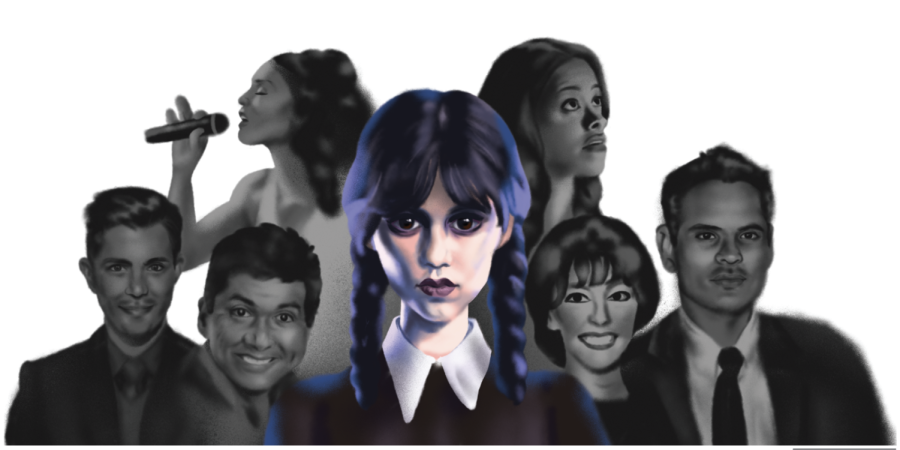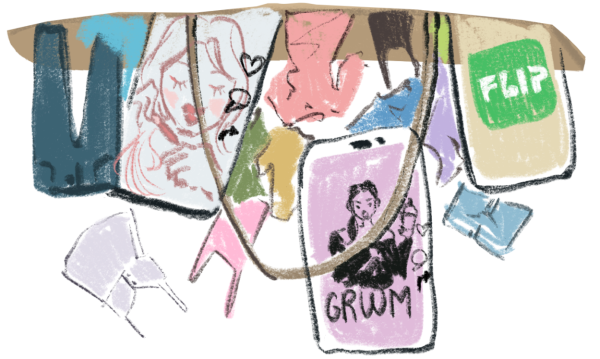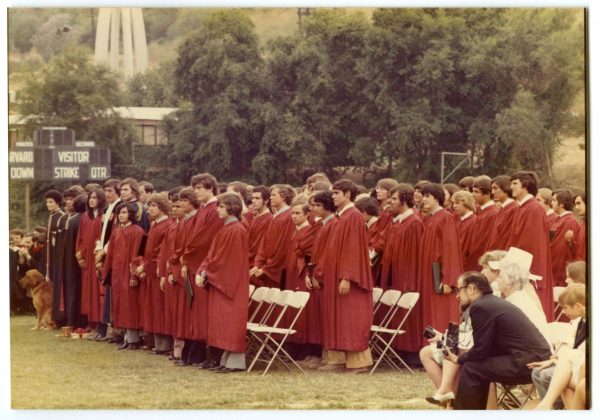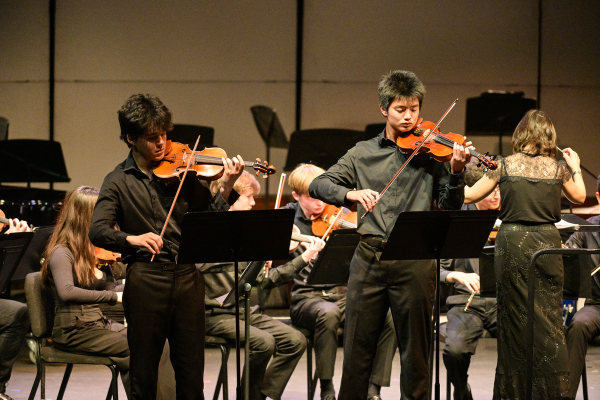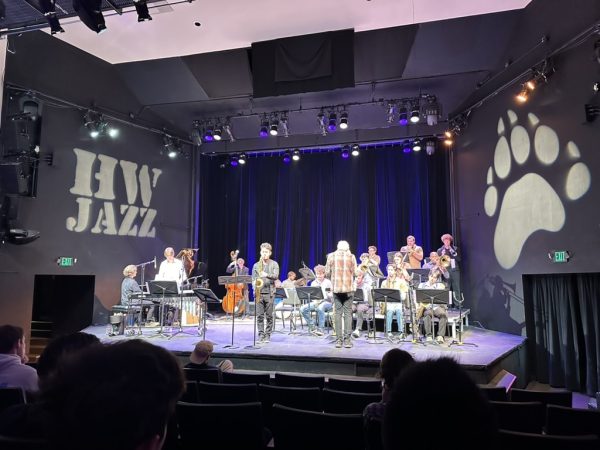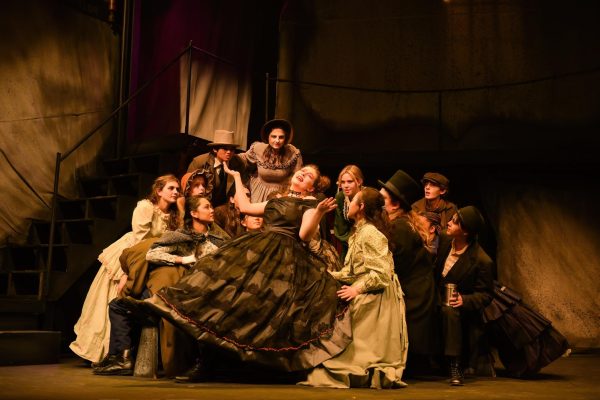Representation Rebooted
Wednesday Addams, a fictional character, stands at the center of various Latino actors. For decades, Addams has been portrayed by white actors, though her character is written to be of Latin descent.
September 30, 2022
Scrolling through Instagram, Muskaan Schievink ’24 said she was drawn to a post in which Netflix announced that they would be producing an eight-part series dedicated to Wednesday Addams, a member of the Addams Family, in a Netflix Original titled “Wednesday.” Schievink said she was elated to see its cast, including Jenna Ortega, Luis Guzman, Catherina Zeta-Jones and Isaac Ordonez, many of whom were actors and actresses she enjoyed seeing on screen.
The Addams Family is a fictional family created by cartoonist Charles Addams. They have been featured in a series of 150 cartoons over a 50-year period, beginning in 1938, as well as television, film, video games, comic books and a musical. Its stories follow the adventures of the members of the family, all of whom are of Castilian extraction and Spanish ancestry.
Schievink said she is excited for the show’s release on Netflix, especially to see the twist that its director, Tim Burton, will be bringing to it.
“I have watched ‘The Addams Family’ as a little kid, and Wednesday was my favorite character,” Schievink said. “I am excited to see the flavor that Tim Burton, this being his first TV directorial debut, will bring to the show, as I am a fan of his work as well.”
Schievink said the announcement caught her attention not only because of the production of the show but also because of its decision to cast Jenna Ortega, an actress of Mexican-Puerto Rican descent, in the role of Wednesday Addams.
“I was surprised to find that [Ortega] was selected for the role of Wednesday Addams,” Schievink said. “Wednesday is a character of Spanish ancestry, but she has been whitewashed for decades, portrayed by actresses like Christina Ricci, Lisa Loring and Chloe [Grace] Moretz. To know that Ortega, an actress of Mexican-Puerto Rican descent, will be portraying her is exciting, and I am glad to see that actors and actresses of Latin American descent are gaining recognition and that their characters are being represented in a fair, equitable manner.”
I am glad to see that actors and actresses of Latin American descent are gaining recognition and that their characters are being represented in a fair, equitable manner.
— Muskaan Schievink
Like Schievink, Ortega said she is thrilled to highlight Wednesday’s Latino heritage in the series in an interview with Remezcla.
“Wednesday is technically a Latina character and that’s never been represented, so for me, any time that I have an opportunity to represent my community, I want that to be seen,” Ortega said.
Jaiden Mathews ’25 said he appreciates the show’s decision to cast Ortega, especially because Latino whitewashing — the practice of casting white actors in non-white roles — in the media has been notably widespread in cartoon remakes.
“I have witnessed many examples of Latino whitewashing in the media, especially in cartoon remakes,” Mathews said. “In ‘The Magic School Bus,’ for example, Carlos, a Venezuelan-American kid, has significantly darker skin [than his peers]. But, in the remake, ‘The Magic School Bus Rides Again,’ [his skin] is lightened. There is an issue in the media with casting white actors as [Latino] characters as well. In ‘Stuck in the Middle,’ Ronni Hawk plays a Latino character despite being a white woman. This is taking away roles from people of color that are made specifically for [them].”
Upper School Dean and Latin American and Hispanic Student Organization (LAHSO) faculty sponsor Celso Cardenas, who said he is Mexican, shared a similar sentiment. Cardenas said Latino whitewashing has been prevalent in the media, beginning in the 1950s.
“There has been a long history in Hollywood of casting white actors [for Latino characters],” Cardenas said. “In 1952, Marlon Brando was nominated for an Oscar for playing Emiliano Zapata. In the Netflix series “On My Block,” a white actress, Ronni Hawk, played a Mexican-American character. Al Pacino has done it in ‘Carlito’s Way’ and ‘Scarface.’ Catherine Zeta-Jones has done it, and so has Madonna, just to name a few. This [continues] to this date.”
Upper School World Languages Teacher Sephora Escarpeta-Garcia, who is as an Afro-Latino from the Dominican Republic, said she was disappointed with HBO’s portrayal of Latino culture in the comedy series “Gordita Chronicles” for the way it romanticized the struggles of Latino immigrants in the United States.
“I was thrilled to see a Dominican story on HBO, but I was disappointed after watching the first episode,” Escarpeta-Garcia said. “I understand [that] everyone’s story is unique and different, but this was way out there. No one in the U.S. gave a Dominican a job that could afford the entire family. Doctors and lawyers came to the country and struggled because they could not speak English. I wanted the raw truth and reality of our struggle to be depicted in the show. There are so many Dominican stories, and yet, [they chose] to tell the pretty one that everyone can relate to except Dominicans.”
Natalie Ascorra ’24, who said she is Hispanic and Latino, said Latino whitewashing in the media is not limited to casting white actors and actresses to portray Latino characters. She said white-passing Latino figures have an easier time finding success in the media as well.
“Latino figures that are white-passing have it much easier in the media,” Ascorra said. “Some examples are J. Balvin and Residente. There are different [identities within] being Latino, and even though representation is improving, it is still not as easy for non-white-passing Latinos.”
Ascorra said it is important to recognize that the term Latino refers to a broad ethnicity, including a variety of cultures and traditions.
“Latino is not a race but an ethnicity,” Ascorra said. “ Being Latino does not equal being Mexican. Each South American country has its own culture and traditions, and we need to cherish and appreciate those as well.”
Cardenas said it is important to understand the difference between appreciating Latino culture and appropriating it as the media has done.
“Appreciation comes with a level of respect,” Cardenas said. “Appreciation is a matter of trying to learn and understand things about another culture, whereas appropriation is taking something and using it without respect or understanding. The Mexican costume, for example, which consists of a Zarape and a Sombrero, is not a form of appreciation. That is cultural appropriation and racist.”
Cardenas said the consequences of Latino whitewashing in the media can be long-term, affecting self-perception, self-esteem and beauty norms within the community.
“The community can feel invisible,” Cardenas said. “Without proper representation, people do not see themselves reflected in the media. This can lead to feelings that impact self-esteem, beauty norms or even role models. There is great power in seeing accurate depictions in the media, moving past stereotypical roles and normalizing Latino as doctors, politicians and educators. There is power in visibility.”
There is great power in seeing accurate depictions in the media.
— Celso Cardenas
Ben Perez ’23, who said he identifies as Mexican, said the inaccurate representation of Latino figures in the media has permeated unhealthy and outdated stereotypes, treating the Latino community as a singular group.
“Whitewashing affects how people view ethnic groups,” Perez said. “Latino people have been saddled with stereotypes of gang violence and drugs. Because of poor representation, people assume that people of [Latin American] descent are similar even though we are not homogenous. This hurts the community more than anything.”
Cardenas said he has seen improvement in the way the media has approached Latino culture, particularly in streaming services, though he said he believes that there is more work to be done.
“Streaming services have been great about pushing the envelope when it comes to representation and casting,” Cardenas said. “However, more can be done. I loved seeing Netflix shows like ‘One Day at a Time,’ ‘On my Block’ and ‘Gentefied.’ But, with the cancellation of these shows, I [could not] help but wonder if they were being promoted and supported. The same has happened to shows with a Latin American cast. [Latin Americans] comprise 19 percent of the U.S. population, and I wish this was normalized in the media.”
Perez said representing Latino figures in the media does not have to be difficult, and it can be done if the media tries to learn and respect the culture rather than rely on outdated stereotypes.
“As long as you respect a culture and are learning about it, I doubt most people will have a problem,” Perez said. “It is when you make assumptions and stereotypes [that] it becomes a problem. The media just needs to learn how to display Latino culture properly, and this starts with giving Latin Americans a platform to represent themselves.”































